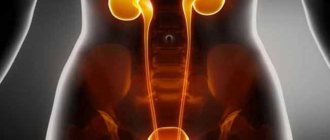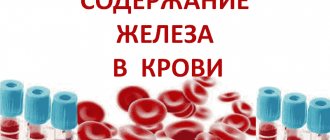HIV infection – a disease that has been spreading throughout the world for more than 30 years.
Over the years that have passed since the first person became ill, the infection has acquired many myths and prejudices.
Unfortunately, people who have no connection with medicine get confused in their heads with true and false information.
Not everyone knows how one can become infected with a disease, and this is the main danger.
Patients often ask what are the characteristics of the virus, and how is it transmitted from one person to another.
Which people are at risk, and when should they not be afraid of infection?
Main risk groups, routes of infection
Human immunodeficiency virus is a disease that causes the death of immune cells. Any disease becomes deadly for an infected person. Doctors have determined exactly how HIV is transmitted. HIV transmission occurs when:
- intimacy (up to 80%);
- use of injecting drugs (up to 10%);
- breastfeeding a newborn baby or during its intrauterine life (up to 10%);
- blood transfusion (up to 5%);
- occupational infection of physicians (0.01%).
The disease is transmitted from person to person when a healthy person enters the body of a patient’s fluid contaminated with an infection with a high concentration of the virus. The sweat secreted by the skin of a sick person, his urine and tears contain a small portion of the infection, so infection in this way is almost impossible.
Typically, HIV is transmitted through the fluid secreted by the genitourinary secretion of a sick person, his blood. The reason is the high level of infection concentration. Infection occurs after infection enters a healthy body. The disease, as it develops, spreads throughout the body of the sick person.
There are categories of people who form risk groups for contracting the virus. People belonging to these categories have a risk of infection many times higher than others. At-risk groups:
- people who inject drugs;
- homosexuals;
- prostitutes;
- lovers of anal sex;
- persons leading a promiscuous sexual life;
- people with diseases transmitted through intimate intimacy;
- blood donors;
- future children of the infected woman;
- healthcare workers specializing in blood transfusions who come into contact with infected patients.
There is a misconception that AIDS and HIV are one disease. This is not true, but these two illnesses are interrelated. HIV and AIDS - what's the difference? HIV penetrates the body; under certain conditions, the virus may not manifest itself in any way for many years. Depending on the health status of the patient, HIV infection develops at an individual rate, which in any, even minor, disease transforms into AIDS (acquired immunodeficiency syndrome). The disease always ends in death.
Stigma and discrimination
Stigma and discrimination in the context of HIV/AIDS is one of the main obstacles to the prevention and treatment of HIV infection. Anti-AIDS organizations around the world are paying more and more attention to human rights issues. Unfortunately, in Russia, as HIV infection spreads, more and more people daily face problems caused by human rights violations in the context of HIV/AIDS.
HIV-positive people live in society, have families, work in various professions, including governing the country. Children with HIV go to schools, go to summer camps, and some of those infected in hospitals back in the late 80s and early 90s have already grown up and are starting their own families. Naturally, in such a situation, additional efforts are required to educate the population in order, on the one hand, to enable every person to live normally and enjoy all the rights of a citizen of their country, and on the other hand, to prevent new cases of infection.
How does infection occur?
Infecting a person with HIV through sexual contact is the most well-known and common method of transmission. Almost 40% of all patients became infected in this way.
Unconventional sex
The virus can be transmitted not only through traditional intimacy. Often, human infection occurs when an infected person has anal penetration of the penis without using a condom. Cracks and microtraumas with minor bleeding occur in the anus. Mixing blood with seminal fluid leads to infection with the disease. Therefore, the disease is widespread among homosexuals.
Is HIV transmitted through oral sex? This is possible, but the likelihood of infection during oral sex is much less. Oral sex is dangerous for the transmission of HIV infection in the presence of bleeding wounds in the oral cavity. Through them, the virus can penetrate from the partner’s genital fluids.
From mother to child
How is AIDS transmitted to a baby from the woman who gave birth to him? The most common way in which HIV and AIDS are transmitted to a baby from the mother's body is intrauterine. Often the fetus becomes infected during the expectant mother's pregnancy. It happens that the unborn child remains healthy before birth, but while passing through the birth canal or during a cesarean section he becomes infected. During childbirth, it is incredibly difficult to avoid the penetration of a woman’s blood infected with an infection onto the mucous membranes of a newborn baby.
A mother can transmit a terrible infection to her baby by feeding her newborn with her breast milk. If a sick woman gives birth to a healthy child, mother's milk is replaced with an adapted milk formula. Breast milk contains fluid secreted by the internal secretion organs; it contains the maximum amount of viruses.
How is AIDS, HIV infection transmitted from an infected person on antiretroviral therapy? It is possible, but the risk is quite reduced. The likelihood of infection entering a healthy body depends on the state of immunity of a healthy person and the presence of other potentially dangerous infections in a sick person.
At risk are drug addicts
Among people who use drugs, drugs are often administered with a single syringe. This is the most common method of transmission of infection. When preparing drug mixtures, there is a possibility that infected blood from a sick person will get into the container. This increases the likelihood of infection in people who use the prepared drug.
In the doctor's office
AIDS, HIV infection - how are they transmitted during the process of blood transfusion? There are many cases of infection of a healthy person in this way. Before donated blood is used for transfusion, it is carefully examined for the presence of HIV and AIDS. For this purpose, special highly effective ELISA tests are used, but errors do occur. False test results are the main reason for the penetration of the immunodeficiency virus into the body of a healthy person through blood transfusion.
How is HIV infection transmitted due to unsterile instruments? In dental offices, beauty salons, manicure and pedicure shops, all instruments must be sterilized. Improper sterilization and sanitization of instruments leads to contamination in this way.
Primary prevention
Primary prevention of AIDS is awareness. Sexual culture and the basics of correct sexual behavior prevent the spread of the virus. All measures taken to prevent HIV infection are aimed at the health of each person individually.
Pre-exposure prophylaxis for HIV infection involves taking medications by a person who does not have the virus in their body. Such medications can significantly reduce the risk of infection.
The goal of primary prevention is to create conditions under which the entry of the virus into the human body will be as difficult as possible. Informing schoolchildren and students about the risk group promotes awareness of the degree of responsibility to oneself. The role of senior mentors is especially important in this. Young people are exposed to the temptations of big cities, such as entertainment and entertainment venues. They often practice unprotected sexual intercourse and the opportunity to try psychotropic substances.
We remind you! The HIV virus is found in almost all biological fluids of the body. The concentration is high in sperm and mucous membranes of the female genital organs.
Using a condom does not provide a complete guarantee against infection through contact with an HIV-positive partner. However, protected sexual intercourse significantly reduces the possibility of virus particles entering a healthy body. Often in the club life of a young man he meets a partner who is in the incubation period of HIV. With constant night life, donating blood for analysis is not included in the schedule of such people. Therefore, it may already be too late to find out about your status. At the same time, a person cannot name the exact number of partners with whom he had sexual relations.
To avoid negative health consequences, always use personal protective equipment.
A surefire way to prevent HIV infection is to avoid unprotected sex with someone you don’t know well.
When trying mild psychotropic drugs, a person exposes himself to the delusion that at any moment he can stop and stop taking drugs. This is wrong. In the later stages of drug addiction, the likelihood of the virus entering the body is especially high. Using one syringe per group of people exposes a weakened body to mortal danger. The best defense option is not to try any substances that can affect consciousness.
Precautionary measures are not superfluous in the life of every person. If you follow fairly simple rules, it becomes more difficult to contract an infection. Contraception will help protect against the immunodeficiency virus.
How HIV is not transmitted
Apart from the above methods of infection, there are no others. Any other contacts or communication with an infected patient are not dangerous and do not carry the risk of infection. The following are ways in which HIV does not spread.
- The virus does not spread through hugs or shaking hands. This is unrealistic, since the skin acts as an insurmountable barrier to the virus, preventing it from passing through. For a person to become infected, it is necessary for infected fresh blood to enter a bleeding open wound of a healthy person. Minor scratches or abrasions do not pose a risk of infection.
- You cannot become infected with the virus by using shared hygiene items or the toilet, because HIV is not spread through household means. The infection is viable in human body fluids: his blood, a woman’s vaginal secretions, a man’s seminal fluid, breast milk, and quickly dies in the environment, outside the human body. Using bed linen, a washcloth of a sick person, or his towel does not pose a risk of infection to healthy people.
- You cannot become infected with the virus when visiting a sauna or swimming pool. It is not possible to spread the virus through household means, and when exposed to moisture, HIV dies almost instantly.
- Penetration of the virus into the body is impossible through communication with animals, its bites and the bites of blood-sucking insects. The infectious agent lives and develops exclusively in the human body. It is impossible to get infected with HIV or AIDS from animals or through the bites of any insects.
- Infection through a kiss is practically impossible, no matter how long it may be. For this to happen, it is necessary that both kissing people have open bleeding wounds in their mouths, and the number of viruses in the saliva of the sick person must be maximum. During the entire period of the epidemic, no such cases were officially registered.
- Transmission of infection through contaminated syringe needles and injections in crowded places. There are many “horror stories” - stories about how HIV is spread by drug addicts, scattering infected needles in crowded places, eager to infect healthy people. Even if we assume that this is true, the virus dies very quickly in the environment.
- The disease is not spread by airborne droplets through contact with an infected person.
Prevention of HIV transmission through blood transfusion
Blood supplies in most parts of the world (but not everywhere) are currently tested for HIV antibodies. When blood is tested for HIV, batches that are found to be infected are removed from blood banks, effectively eliminating the risk of HIV transmission.
Unfortunately, in some parts of the world, blood is not always tested.
Universal precautions are based on the fact that all body fluids can contain HIV or other blood-borne diseases. Here are some rules to follow as part of universal precautions:
- Cover cuts. If there are cuts or open sores on the skin, they should be covered with a plastic bandage.
- To wash hands. Hands should be washed with soap and hot water after contact with blood or other body fluids, after using the toilet, before preparing or eating food, and after removing latex gloves.
- Clean up. To remove spilled blood or other bodily fluids, use a freshly prepared solution containing 1 part household disinfectant and 9 parts water. Used toilet paper should be thrown into a plastic trash bag. When cleaning, do not forget to wear latex gloves.
- Wear gloves. Gloves should be disposable and should be disposed of immediately in a plastic trash bag. If necessary, small plastic bags can be used instead of gloves. While wearing gloves is strongly recommended, we should all keep in mind that intact skin is an excellent barrier to HIV, as the virus cannot penetrate the skin unless there is an open wound or cavity lined with mucous membrane. If blood comes into contact with your skin, wash it off immediately with soap and hot water.
- To wash clothes. Contaminated items should be stored in sealed plastic bags. Dirty clothing should be washed separately in hot soapy water and tumble dried or dry cleaned.
- Take out a rubbish. When disposing of waste that may contain contaminated materials or used needles, precautions should be taken. Materials contaminated with blood or other body fluids should be disposed of in sealed plastic bags.
How to reduce the risk of disease
Having information about the methods of infection, you can reduce its risks to a minimum or avoid it altogether. You need to follow simple rules:
- when performing medical procedures, use disposable materials (this will protect you from contracting other infections transmitted in this way);
- when using reusable devices for medical purposes, high-quality sterilization is necessary;
- When performing a blood transfusion, you need to donate your own blood;
- avoid casual sexual contacts, use condoms (this will protect against unwanted pregnancy and help avoid sexually transmitted infections);
- if casual sexual contact does occur, it is worth taking a blood test after about a month, so that in case of infection with the virus you do not endanger your loved ones;
- If a healthy baby is born to a mother infected with the infection, breastfeeding should be abandoned in favor of artificial milk in order to avoid infecting the baby;
- don't use drugs.
The human immunodeficiency virus is the most terrible disease in the world; there is no vaccine that protects against HIV. Once infected, it is impossible to get rid of the virus because a vaccine has not yet been invented. The virus develops into AIDS, a disease with a 100% fatal outcome. To prevent infection, you should follow simple rules and try not to fall into a risk group.
Preventing sexual transmission of HIV
This prevention is based on the protection of human rights, including the right to independently control one’s sex life.
Prevention of sexual transmission of HIV consists of having accurate and complete information about safer sex, including information about the need for constant and correct use of condoms, based on the fact that the male latex condom is the single most effective existing technology for reducing the risk of HIV transmission during sexual intercourse.
Providing information on abstinence, delayed onset of sexual activity, mutual fidelity, reducing the number of sexual partners, comprehensive and correct sex education, information on early and effective treatment of sexually transmitted infections is also a preventive measure.
HIV and AIDS
HIV infection has a destructive effect on the immune system, thereby reducing the body's resistance to various diseases. If in the first period infection may occur imperceptibly and not manifest itself externally, then in subsequent stages the immune system is weakened to such an extent that the body becomes susceptible to any infectious disease. These diseases include those that very rarely affect uninfected people: pneumonia caused by microorganisms, the tumor disease Kaposi's sarcoma.
The condition when a person infected with HIV begins to develop infectious diseases, the cause of which lies in problems of the immune system, is called AIDS.
Signs and symptoms
HIV is a very insidious infection that, when it enters the human body, may not manifest itself in any way. Reproduction of the immunodeficiency virus most often does not cause any symptoms of AIDS in the infected person. The only reliable way to determine it is to take an HIV test.
Only in some cases, signs of AIDS are observed in the patient within a short period of time after infection. Primary symptoms:
- temperature rise to 37-38°C;
- enlargement of several lymph nodes;
- the appearance of pain when swallowing;
- red spots on the skin and mucous membranes;
- prolonged diarrhea.
Often people do not pay attention to such symptoms, considering the disease to be a common cold or mild poisoning. Moreover, the primary signs of AIDS quickly disappear, although the virus itself leads an active life inside the human body. On average, HIV goes undetected for 10-12 years until it begins to manifest itself in full force.
As HIV infection progresses, accompanied by a weakening of the immune system, the first real signs of AIDS appear in the patient. First of all, these are diseases that pass quickly and without consequences in healthy people, which can lead to a dangerous and even fatal condition in an HIV patient.
Symptoms of AIDS are such regularly occurring diseases as tuberculosis, herpes, pneumonia, cytomegalovirus infection, and others related to opportunistic infections. It is these illnesses that in most cases lead to dire consequences. In addition, symptoms include dementia, prolonged fever, subacute encephalitis, sepsis, weight loss, and cough.
AIDS - the last stage of HIV infection - has three clinical forms:
- onco-AIDS, manifested in the form of brain lymphoma and Kaposi's sarcoma;
- neuro-AIDS is characterized by damage to the nerves and central nervous system;
- infectious AIDS, the symptoms of which are numerous infections.
Features of the virus
Before examining the routes of HIV transmission, it is necessary to become more familiar with the disease itself.
Indeed, in the case of the immunodeficiency virus, knowledge is not only power, but also a way to protect against the disease.
HIV is a typical retrovirus.
Having entered the body of a previously healthy person, it can hide for a long time, without reminding anyone of itself.
Only after some time will the person experience an attack that will resemble a completely standard acute respiratory infection.
In this case, the direct culprit will remain undiagnosed.
After all, at this stage, HIV can only be determined using PCR, and the analysis is expensive.
It is simply not accepted to prescribe it to all people suffering from a common cold.
After a short outbreak, there is a lull again.
Antibodies to the virus are produced rather slowly, as doctors note.
For some patients this process takes six months, and for others up to 10 years or more.
But even at the stage of producing antibodies, a person is contagious, and this is the main danger.
After all, he himself may not know that he is spreading HIV.
The only thing that now saves us from widespread infection with the pathogen is that HIV has very low resistance outside the human body.
Heating to 60 degrees is enough to kill it in 30 minutes.
And boiling will kill HIV within the first minute.
The virus is still being studied by scientists and doctors.
Now the work of doctors is aimed at developing a vaccine, but this is a difficult matter.
The problem is that the pathogen is constantly changing and looks different in different people's bodies.
Because of this, it is difficult to create a working vaccine, although medicine is working to resolve this issue.
Once in the human body, the virus begins to slowly kill the immune system.
Over time, immune protection decreases so much that a person can die from even the simplest infection.
The pathogen responsible for the HIV pandemic is the human immunodeficiency virus. It received this name based on its effect on the affected organism. Once in the bloodstream, the microorganism attaches itself to the cells of the immune system. For the virus to attach, there must be CD4 receptors on the surface of the donor cell. In the human body, this is a whole series of cells: microglial cells, T-helper cells, dendritic cells, macrophages, Langerhans cells, monocytes.
After attachment, the virus begins to multiply and new viral particles appear. The main problem is that the virus attacks precisely those cells that are designed to destroy it. As the number of copies increases, the immune system weakens and a person becomes vulnerable to many bacteria, viruses, and fungi. Against the background of a helpless barrier function, tumor cells get out of control and new growths appear.
The amount of virus in the blood is called the viral load: the higher it is, the weaker the body. The causative agent of the disease is one of the lentiviruses - a family of retroviruses with a long incubation period and prolonged development of the disease. HIV infection also progresses slowly in several stages. The rate of viral RNA replication depends on its type.
As new copies are produced, the virus often mutates. Almost every new genome differs in some way from the previous one. According to scientists, the virus is just over 10 years old. During this time, 2 main types of pathogens appeared, each of which is divided into subtypes and groups. The cause of the mass epidemic was the HIV-1 type (SIV-1); when people talk about HIV without specifying the type, they mean this particular type. SIV-2 is less common and is mainly localized in West Africa.
The SIV-1 type progresses faster and is more contagious than SIV-2. But modern tests recognize both types, and antiretroviral therapy is active against SIV-1 and SIV-2. The routes of infection are the same for any strain of the pathogen.
Sanitary and anti-epidemic measures for HIV infection
HIV prevention is carried out comprehensively in relation to the sources of HIV, routes of its transmission and the population in epidemic foci. It is necessary to carry out measures in relation to the infected person, the purpose of which is to reduce the likelihood of infecting other people:
- timely diagnosis;
- taking antiretroviral drugs as prescribed by a doctor;
- examination and elimination of sexually transmitted diseases;
- referring individuals to drug addiction treatment;
- ban on travel and deportation of HIV-infected citizens.
Measures are being taken regarding transmission routes:
- Disinfection of medical instruments and equipment in medical institutions, beauty salons and hairdressing salons.
- All medical procedures are subject to control, including the use of barrier protection methods.
- Examination of donor material at each sampling, quarantine of blood products with rejection of infected samples.
- Conducting HIV transmission investigations.
- Notifying the public, especially people at risk.
- Work on counseling vulnerable groups.
Measures for populations most at risk:
- The fullest circle of people who had contact with the infected person is identified, which makes it possible to notify about methods of protection. Contact persons are those who had the opportunity to become infected, based on possible transmission mechanisms.
- Consultations are conducted on avoiding situations in which HIV transmission is possible - the main prevention among contact persons and the population.
- Chemoprophylaxis is used to prevent the development of the disease in people exposed to the risk of infection.
Antiretroviral drugs are indicated for newborns with maternal infection and for persons who have been injured or come into contact while providing care to infected people.
Prevention of infection in medical institutions
The basis of prevention is adherence to a regimen in medical institutions aimed at counteracting the spread of the virus in accordance with the requirements of the SanPiN instructions. When carrying out prevention, it is assumed that every patient is a potential carrier of infections.
State surveillance authorities monitor the epidemic situation. Compliance with the basic requirements of disinfection and pre-cleaning, sterilization, disinfection of medical waste, use of disposable instruments with subsequent disinfection is ensured. The staff is equipped with the necessary equipment, tools, disinfection and protective equipment.
If the spread of infection through medical procedures is suspected, a set of preventive measures is carried out:
- investigation to determine the source;
- identification of contact persons;
- implementation of a set of preventive measures.
Prevention of infection among healthcare workers
In order to prevent infection of medical personnel, a set of measures is being taken to avoid situations with possible infection when performing various types of work - taking into account microtraumas, situations where blood gets on the skin and mucous membranes. If there is a suspected infection in the workplace, a healthcare worker must take measures to reduce the likelihood of HIV infection.
Actions include:
- If damage to the skin occurs, remove gloves and wash the skin with soap, treat with alcohol and 5% iodine solution.
- If biological fluids come into contact with the skin, treat with alcohol solution, wash with soap and treat with alcohol again.
- If blood comes into contact with the mucous membrane of the eyes or nasopharynx, rinse the eyes with plenty of water, and the mouth and nose with additional alcohol.
- If the patient’s blood gets on the gown, the overalls are immersed in a disinfectant solution or in a bix for subsequent disinfection.
- ART should be started as soon as possible.
As soon as possible after the suspected infection, it is necessary to conduct a test for HIV and hepatitis of the person who may become a source of infection. The study is carried out using a rapid antibody test after suspected transmission of the virus, with a sample from the same portion being sent to test for HIV using the ELISA method. For a year, plasma samples of an infected person and a contact person are stored in the AIDS center.
The victim or contact person should be asked about the presence of HIV, hepatitis, STIs, inflammatory pathologies of the genitourinary system and others. Behavioral advice is provided to reduce the risk of transmission.
If the presence of HIV is determined, it is determined whether the source of infection received ART. Women have their hCG level determined or undergo a rapid test to diagnose pregnancy; lactation should also be excluded.
Emergency prevention
If it is not possible to take an HIV test, you should immediately start taking AVT. Therapy includes taking antiviral drugs in the first few hours after suspected contact, but no more than 3 days should pass before it begins. The standard regimen is panavir/ritonavir + zidovudine/lamivudine.
In the absence of the above drugs, any other from the group of antiretroviral drugs can be used. If it is not possible to completely assign the first scheme, then it is worth starting from the available funds, optimally two, but one is also possible. The use of nevirapine and abacavir is possible only in the absence of other drugs.
If nevirapine is the only drug available, only one dose can be taken and no further doses of the drug can be taken. Then, when others become available, full-fledged chemoprophylaxis is prescribed. Before using abacavir, you should make sure that you are not allergic to it. If there is a reaction, you need to replace the drug.
HIV is a dangerous infection for which there is currently no treatment. The risk of infection through blood is quite high.
Prevention of infection is the main method of containing the epidemic. It is mandatory for implementation not only in medical institutions, but also in beauty salons. People at risk are advised to get tested periodically.











